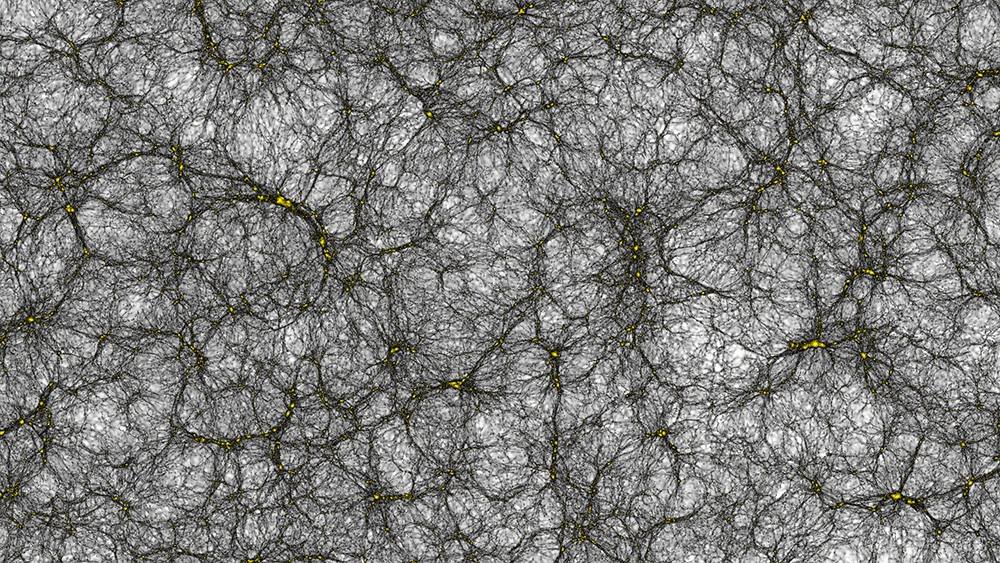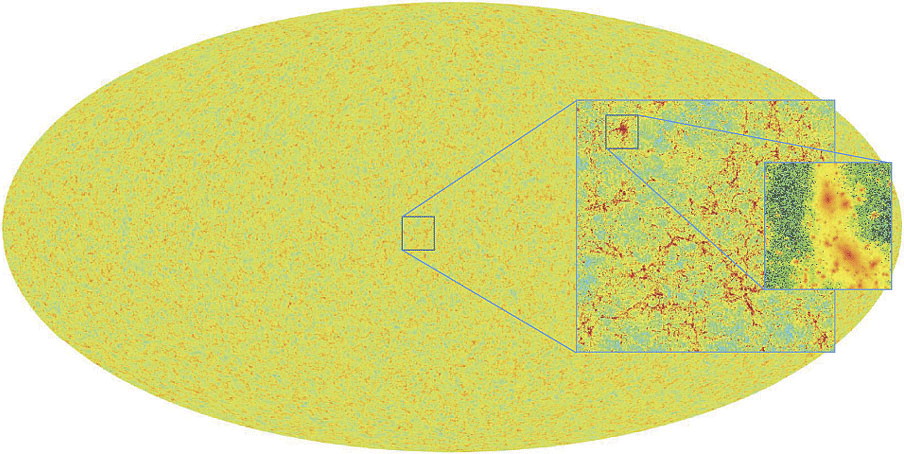China has created the largest virtual universe, is now working on AI

A part of the virtual Universe (approximately 1 billion light-years across) shows how dark matter is distributed in space, surrounding yellow halos and connecting with dark threads. White regions are areas of cosmic emptiness, the least dense regions of the Universe. Photo: Joachim Stadel, University of Zurich
The Chinese broke the European record and created the largest simulator of the universe. Scientists have called this a “warm-up” for the world's most powerful supercomputer Sunway TaihuLight on 10 million CPU cores, the South China Morning Post (SCMP) writes . Interestingly, the previous record with the “largest simulator of the Universe” was set quite recently - in June 2017 at the University of Zurich.
The Swiss model is a giant catalog of about 25 billion galaxies, generated from 2 trillion "digital particles", representing a kind of "dark matter fluid". In the Chinese model, the number of particles was increased to 10 trillion, and it simulates the Big Bang and the expansion of the Universe at an early stage.
Experts believe that the simulation of the creation of the universe will help to determine the most interesting areas of space for more detailed study with telescopes.
To create a Swiss simulation, a special program PKDGRAV3 was created (it is described in the scientific work in the journal Computational Astrophysics and Cosmology , doi: 10.1186 / s40668-017-0021-1). This code makes the most optimal use of the architecture of modern supercomputers, such as Piz Daint at the Swiss National Computing Center. On this supercomputer, the program used 4000+ GPU nodes, and the execution took 80 hours. During this time, she generated a virtual universe of 2 trillion digital macro-particles of dark matter. From these particles, a catalog of 25 billion virtual galaxies was extracted.
The essence of the experiment is that the simulation model corresponds to the relic radiation of the early Universe, which is fixed by modern telescopes. This radiation was formed when the universe was about 400,000 years old. The model “transforms” dark-matter macro-particles into 25 billion virtual galaxies, which should correspond to modern observations.
Cosmologists suggest that “dark matter fluid” under the influence of gravity accumulated in the so-called dark matter halos , in which galaxies like our Milky Way were formed.

The model of the University of Zurich simulated the entire visible Universe and all the galaxies in it larger than 10% of the Milky Way. In general, this is part of the larger Euclid project of the European Space Agency for the study of mysterious dark matter, which is 23% of our Universe, and no less mysterious dark energy, which is another 72%.
In the Chinese press they write that their supercomputer bypassed the Swiss in performance - and they performed calculations not with 2 trillion, but with 10 trillion macro particles. In this case, the calculations took only 1 hour. It is strange that the newspaper does not take into account the fact that 4000+ GPUs were used in Switzerland, and in the Wuxi Supercomputer Center - all 10 million processor cores of the Sunway TaihuLight supercomputer, which is considered the most powerful in the world. That is, all the CPUs were used completely, without remainder, to solve this gravitational problem of N bodies .
Supercomputer Sunway TaihuLight. Photo: Xinhua
In general, in recent years, China has achieved an overwhelming advantage over other countries in the computing power of its supercomputers, according to the Top500 rating. The Chinese say that creating a virtual universe is only the first step, but in the future they are going to use this computing power for world domination in the field of Artificial Intelligence . At the very least, such a plan is set at the government level.
In China, AI is considered a strategically important technology, although now they are inferior in terms of developments in this area to the Americans. Russia and other CIS countries practically do not participate in this technological competition.

Due to the lack of sufficiently resource-intensive tasks and the corresponding software, the power of Chinese supercomputers is not fully used now - their resources are divided into tens and hundreds of small tasks. Creating an AI will allow you to load a whole supercomputer with one task, as it is now in simulating a virtual universe.
All Articles